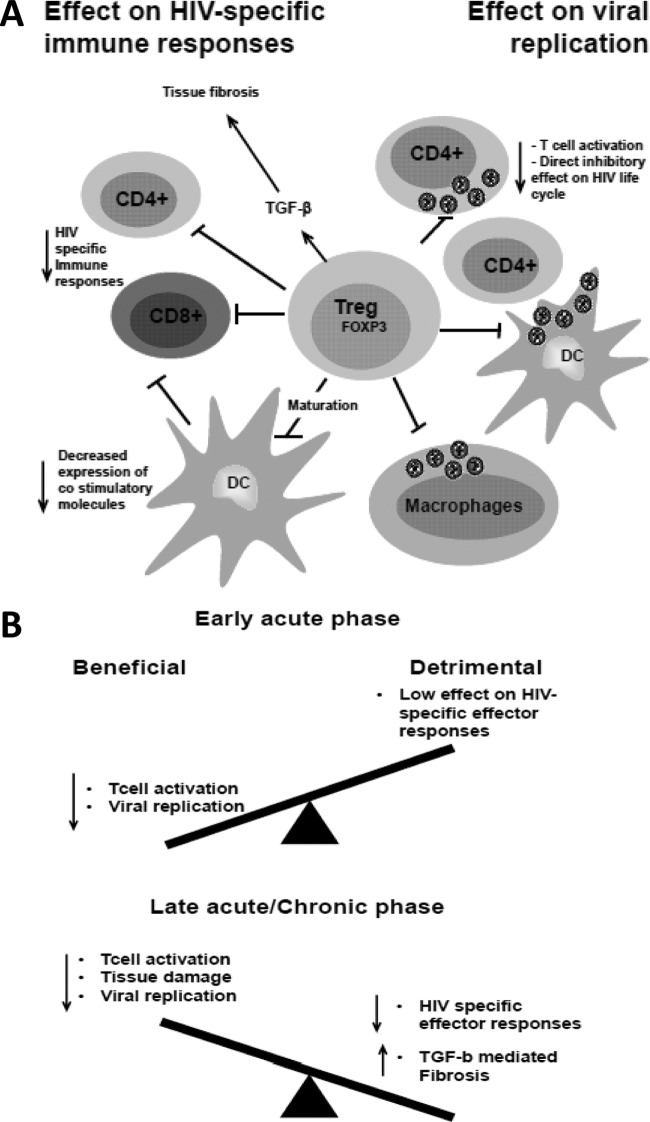Fig 2.
Potential role of Tregs during HIV infection. (A) Increased Treg frequency during HIV infection can lead directly to decreased T cell activation, thus decreasing the availability of target cells for HIV replication. Tregs can also decrease the capacity of DCs to transmit the virus to CD4+ T cells as well as decrease viral replication in macrophages. Importantly, Tregs can decrease viral replication by directly affecting the HIV replication cycle. On the other hand, Tregs can decrease CD4 and CD8 HIV-specific responses either directly or indirectly by decreasing the maturation of DCs, thus impairing DC capacity to induce immune responses. Tregs also contribute to immune dysfunction by secreting large amounts of TGF-β, thus contributing to lymphoid tissue fibrosis. (B) Based on the literature, a potential model for Tregs' role is that they may have an overall beneficial effect during early acute HIV infection, before HIV-specific immune responses are fully activated, by controlling T cell activation and decreasing the availability of target cells for HIV replication and transmission. In contrast, during the late acute and chronic phases, increased Treg frequency may have an overall-negative role, as the Treg suppressive effect on HIV antiviral immune responses predominates.

